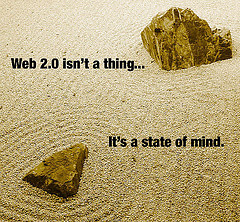This weekend I sat down with the newest version of the CREW Weeding Manual, an excellent guide to the ins and outs of weeding a library collection. Since starting at this school I have rearranged the layout, done displays, bought new resources, played with technology, had a stocktake, but I have not done a comprehensive weeding. Some areas are crying out for attention (eg ten shelves of VHS off-air recordings, or the Teacher Reference shelves where extracting one tightly inserted title invites an avalanch), others aren’t too bad. I need to set myself a plan of attack, thus my reading matter as an instant refresher course.
Background info: the CREW method means Continuous Review and Evaluation – the idea being that you do not destroy your own sanity by attempting to weed an entire collection in one hit, but tackle it in pieces throughout the year. Ideally you would simply begin at 000 (the CREW method is based on the Dewey Decimal System) and keep going until you ran out of numbers at 999.9999. I am not going to do that this year – I really need to target areas of immediate importance and usefulness, so I will plan a full-year program based around incipient units of work. For instance, I know that Year 3 will be looking at Tasmania in Term 1, so an examination of the 994 sections (non-fiction, TR, posters and AV) in the next week will be useful in identifying MUSTIE resources and planning new purchases.
?MUSTIE? Yes, that’s right – MUSTIE is the second part of the method. When deciding whether a resource adds value to the library collection, we need to consider quality, accuracy, physical condition, authority, relevance, currency and so on. MUSTIE is a brilliant acronym for the main reasons to consider removing a resource:
Misleading
Ugly
Superseded
Trivial
Irrelevant
Elsewhere
The other factors that must be considered are age and popularity – anything too old or unpopular adds no value to the collection, so the CREW method includes suggested timeframes for these two factors for each non-fiction section: areas which undergo rapid development, eg digital technology, require more frequent review than classic fairytales for instance, and titles that have sat untouched on a shelf in the decade since they were purchased are unlikely to suddenly become popular in the next few years.
Planning this comprehensive review of an entire collection is a little daunting, but I’m hoping that I can allocate myself a lesson each week to tackle this task, and get through it in bite-sized pieces. I think that this is also going to turn out to be something of a collection mapping exercise – another technique that I need to review as I plan this out.
Last but not least, I am keeping as my compass points Ranganathan’s Five Laws of Library Science:
- Books are for use.
- Every reader his book.
- Every book its reader.
- Save the time of the reader.
- A library is a growing organism.







